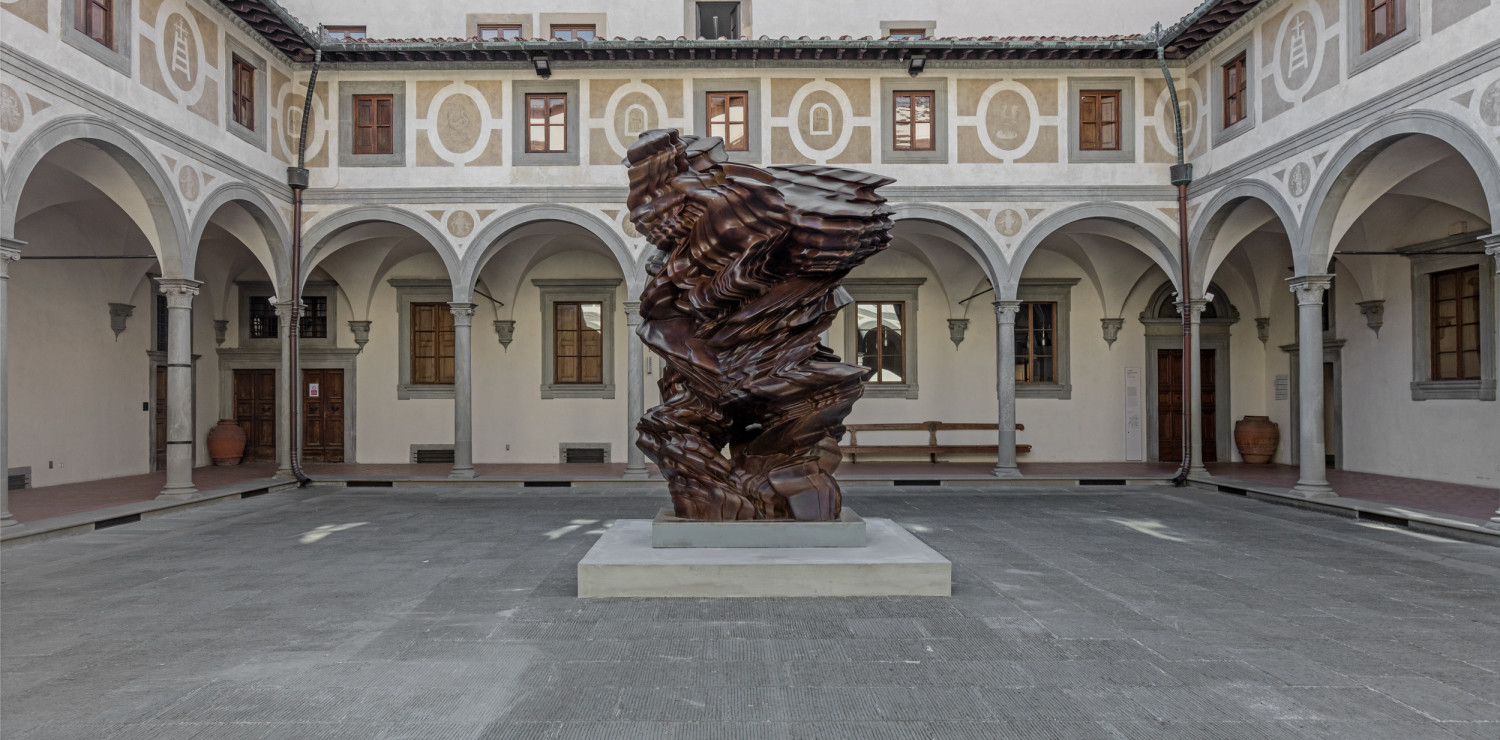text Stefania Rispoli, co-curator with museum director Sergio Risaliti of the exhibition Tony Cragg. Transfer
Tony Cragg. Transfer to the Museo Novecento and the Istituto degli Innocenti
Until 5 February 2023 the major monographic exhibition of the British sculptor
Until 5 February, the rooms and Renaissance courtyard of the Museo Novecento are hosting the works of one of the greatest living sculptors, Anthony Cragg (Liverpool, 1949), known since the 1970s for having contributed to a renewal of plastic language through the introduction of some of the most innovative materials and techniques of our time.
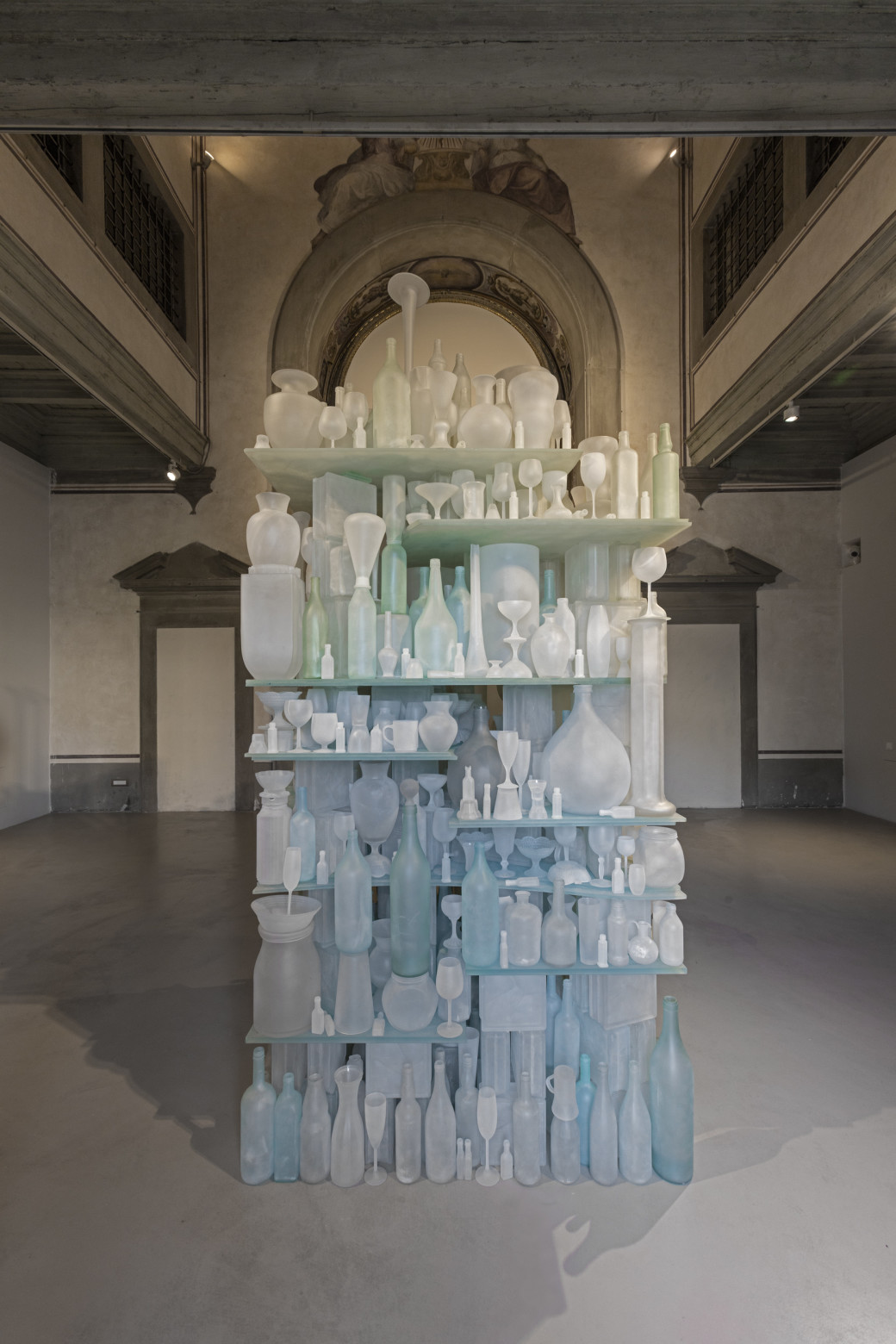 TONY CRAGG. Transfer
TONY CRAGG. TransferMore than 60 works including sculptures, models, drawings, watercolours and several large-scale pieces will be distributed throughout the rooms of the museum and the Cortile degli Uomini at the Istituto degli Innocenti, giving an overview of the artist’s prolific creative output and illustrating the process by which he conceives and conveys his ideas and emotions, from thought to object. Designed in close collaboration with the artist, the Transfer exhibition is an authentic homage to sculpture, Cragg’s grandiose obsession from the start. Indeed, his entire artistic oeuvre can be seen as a tribute to the endless possibilities of form and the boundless variety of solutions that only art, hand in hand with nature, can evoke.
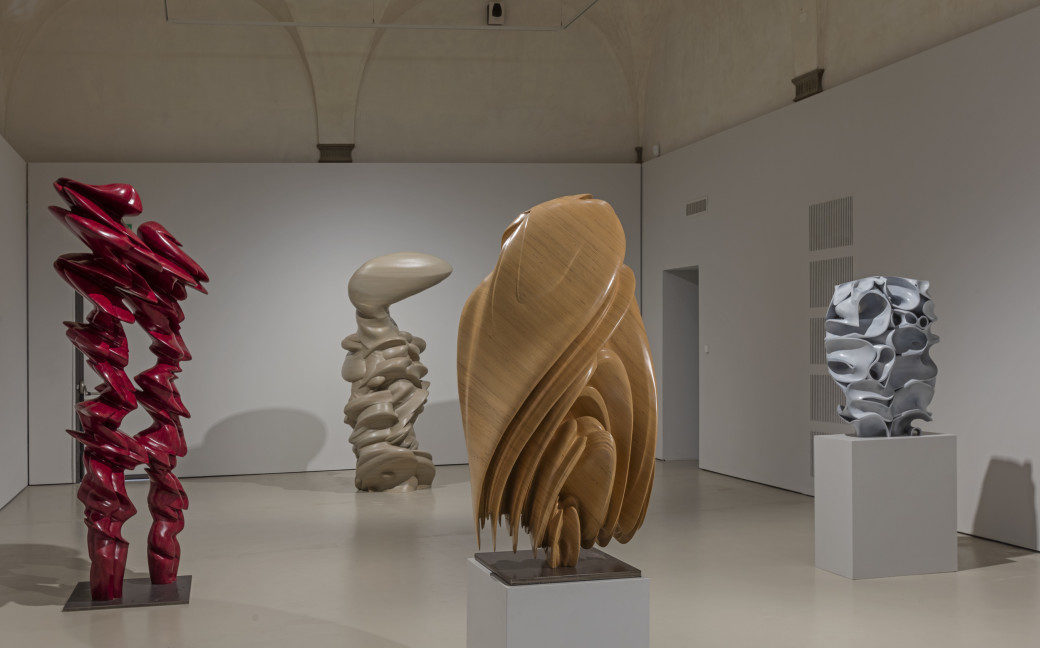 TONY CRAGG. Transfer
TONY CRAGG. TransferCragg’s early works, dating back to the 1970s, arise from the assembly of everyday objects (such as tools, furniture, small artefacts and waste materials) and echo the tradition of Duchamp’s readymades and the objets trouvés of Surrealism. His study of philosophy and his scientific research later led him to experiment with materials (from bronze to resins, steel to plastic, plaster, wood and glass) and to create sculptures which, even today, are a combination of artisan skill and technology, often featuring robotics. As extensive as it is complex, his entire output seems to draw on an inexhaustible source of inspiration: his observation of everything that surrounds us, the invisible as well as the visible, the micro as well as the macro: from nature with its organic design to the crystalline structure of minerals; from digitally created images to products synthesised in laboratories; from archaeology to geology, art history to biology. “Art is the only discipline that uses substance and materials in a non-utilitarian way, solely to create new forms, new ideas and new emotions”.
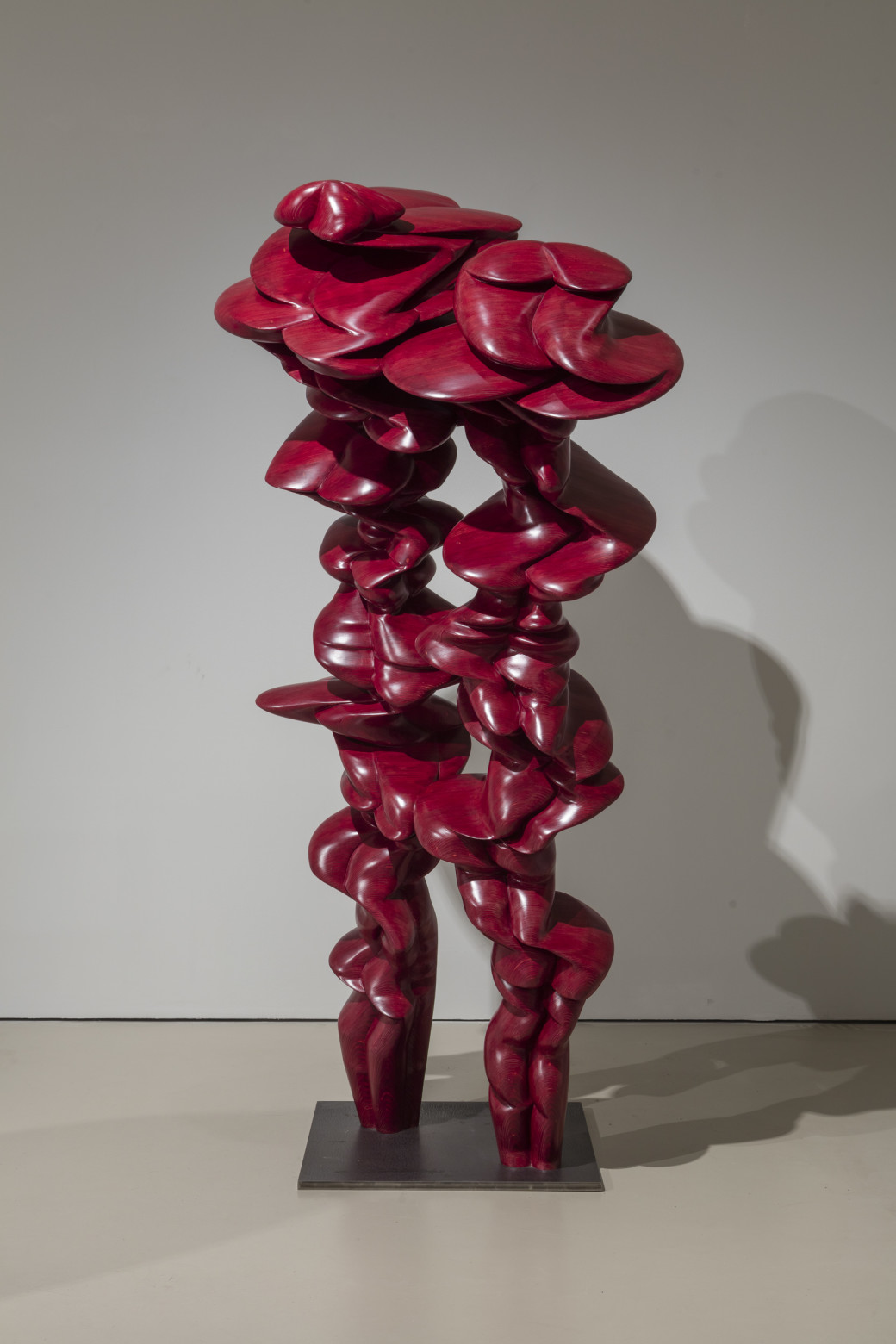 TONY CRAGG. Transfer
TONY CRAGG. Transfer
This extreme curiosity for the infinite ‘forms of the world’, whether natural or man-made, and Cragg’s confidence in the expressive capacity of art, translates into an experimentation that knows no bounds and a continuous quest for new insights and possible representations.
In his creative process, Cragg constantly harvests, creates, manipulates and distorts form, giving rise to semantically ambiguous sculptures that shift between the abstract and the figurative. His works are conceived as complex structures that test physical and structural limits, seeking to achieve the perfect harmony between material and technique. Generated by a source that, like a monadic unit, sustains them from the centre out, they resolve themselves into many different ramifications, imitating the action of nature on its forms. The artist always proceeds in the same way - from drawing to choice of material, to the trialling of techniques and the selection of colour - shaping substance and learning from it and its reactions. In this way, the work unfolds only one step at a time as it is made, revealing to artist and observer alike the endless possibilities of the form. “I want to make a work that has the same effect that observing nature has on me. In this sense, I’m still fascinated by the way the rational constructs underlying forms can be translated into emotional qualities”.
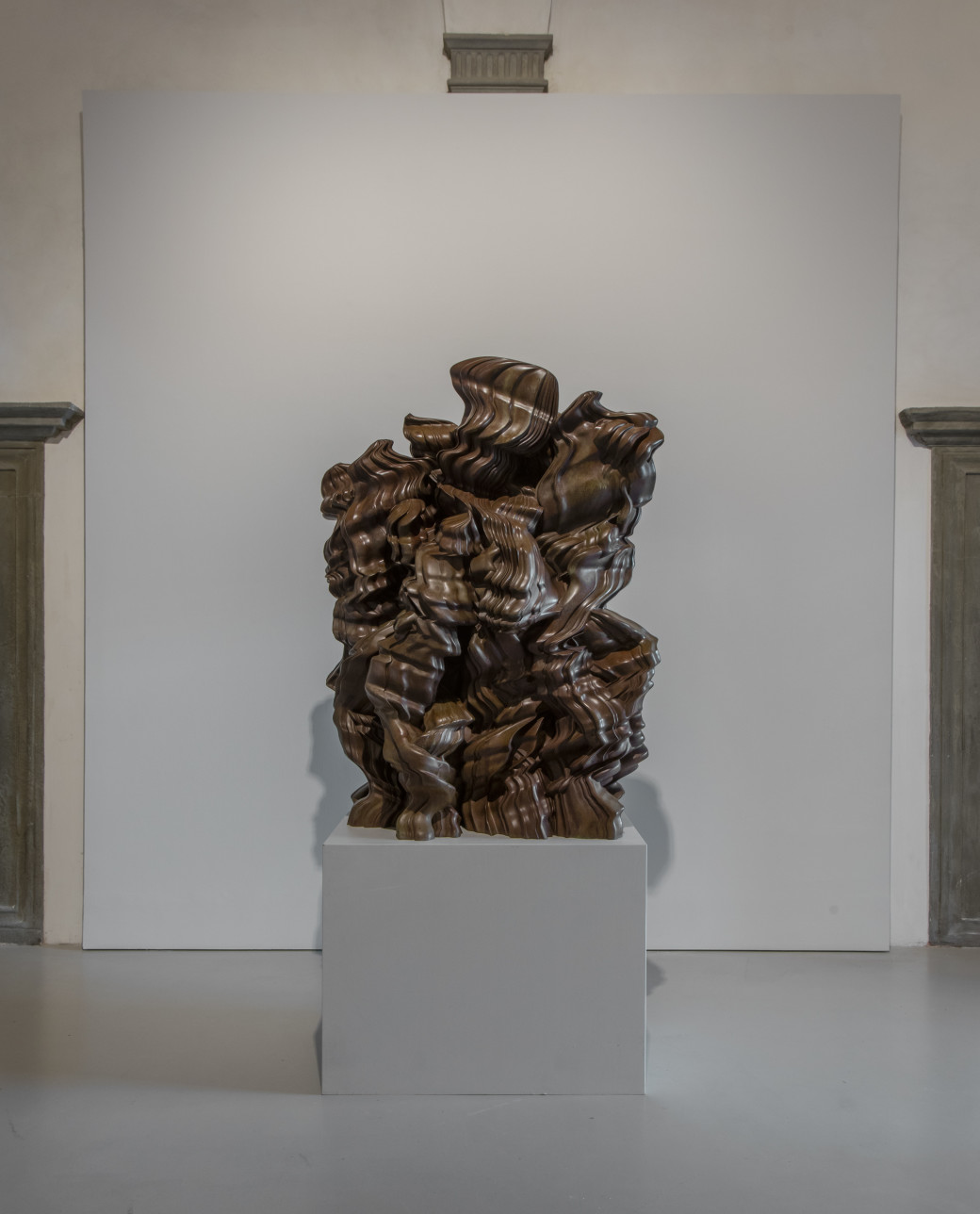 TONY CRAGG. Transfer
TONY CRAGG. TransferTransfer is a unique project because it is designed to be a device of mediation for audiences as well as an opportunity to present Cragg’s work. The numerous sculptures are joined by drawings and works on paper, conceived by the artist as essential preparatory tools for his sculptures. Meanwhile, a room on the ground floor of the museum replicates the artist’s studio, always seen as a place of creation, but also of life. Indeed, since the late 70s, Cragg has constructed in Wuppertal, Germany - where he still lives and works - a place for planning, perceived as a genuine bastion of art, a scientific laboratory with techniques that work simultaneously on several pieces, exploring the capacities and limits of techniques and materials. Not far away, in 2008 he founded the Skulpturenpark Waldfrieden, an open-air sculpture park to display his works alongside those of numerous contemporary artists, testimony to his ongoing devotion to sculpture in the broadest sense.
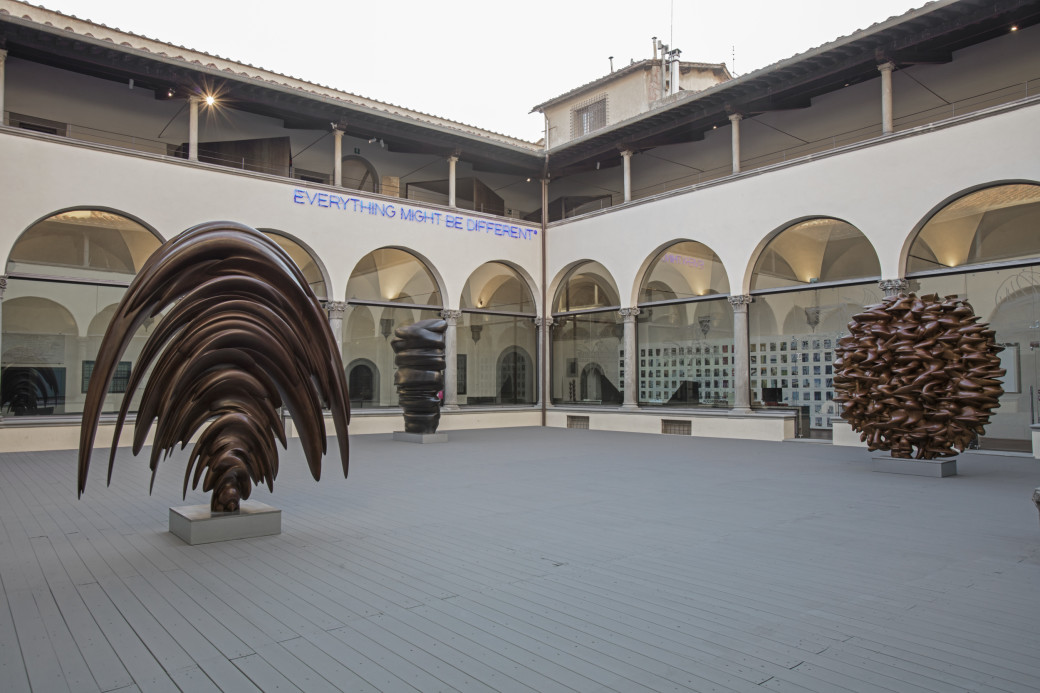 Tony Cragg. Transfer
Tony Cragg. Transfer"There will be a large sculpture at the Istituto degli Innocenti in dialogue with the Cortile degli Uomini designed by Brunelleschi. The rest of the itinerary will take place at the Novecento, where we have not only drawings but also sculptures and where in one room we will re-enact the artist's studio, so as to show Cragg's creative process," said Sergio Risaliti, director of the Novecento Museum. "An artist who, in the wake of Moore but also Leonardo da Vinci, continually inspires, relates and confronts the creative processes of Nature, on a micro and macro level. A sort of positive and generous competition that leads him to confront the variations of matter inherent in Nature itself, to which he adds experimentation with more technological and artificial materials. Moving, for example, from bronze to stone materials and new resins'.






